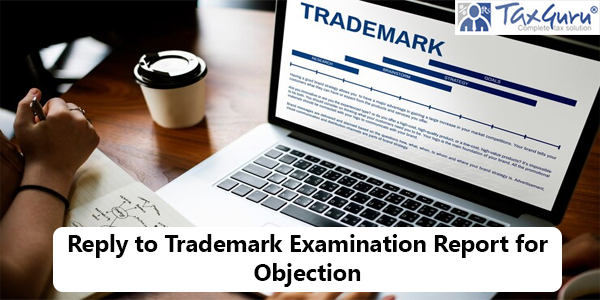Securing your brand identity through the filing of a trademark application in form TM-A under the applicable trademark class is a vital step in the business journey. However, the process doesn’t stop with the application submission. After TM application and getting the trademark application number upon the review, the trademark department issues a Trademark Examination Report which can be either of the following:
1. Accepted;
2. Objected; and
3. Objected with TM-M
If you have received Accepted status after filing the trademark application. Congratulations as the Trademark Registry has given a green signal to proceed with the trademark registration. However, at many occasions the applicants/ agents receive an objection with or without TM-M with the examination report. After receiving the Trademark Objection, it is mandatory to file Reply to Examination Report within 1 month by efiling mode or mailing to parm.tmr@nic.in
You can check the trademark status at https://ipindiaservices.gov.in/eregister/eregister.aspx
Responding effectively to these objections is crucial for safeguarding your brand. In this article, Compliance Calendar will guide you through the process of filing a comprehensive reply to a Trademark Examination Report objection.
Understanding the Trademark Examination Report:
Before getting into the reply process, it is essential to know the nature of objections raised in a Trademark Examination Report under Section 9 or 11 and in some cases both with or without TM-M. These objections can hold various issues, from concerns about distinctiveness and similarity to existing trademarks, to misclassifications of goods or services. A review of the report will provide insights into the specific grounds of objection, enabling you to prepare your response accordingly.
Components of a Strong TM Objection Reply:
Identify and Acknowledge Objections:
Initiate your reply by clearly identifying and acknowledging each objection raised in the Trademark Examination Report including supporting documents if any. Offer a summary of the concerns, showcasing your understanding of the examiner’s perspective. This step demonstrates your diligence and commitment to addressing the raised issues.
Legal Basis and Precedents:
Establish the legal foundation for your trademark registration by mentioning relevant statutes . Clearly express and explain why your mark meets the legal requirements for registration, addressing each objection individually. Use case law and legal provisions to make your arguments stronger and emphasize that your trademark is distinctive and deserving of protection.
Distinctiveness and Descriptiveness:
If objections pertain to the distinctiveness or descriptiveness of your mark, provide evidence and arguments that underlines the unique and non-descriptive nature of your trademark. This might involve presenting consumer surveys, market research, or other pertinent data supporting the distinctiveness of your mark.

Comparison with Existing Trademarks:
In the case of objections based on the similarity of your mark to existing trademarks, conduct a comparative analysis. Highlight differences in terms of design, phonetics, and overall impression. Emphasize the co-existence of similar trademarks in the market without causing confusion among consumers.
Goods and Services Classification:
Address objections related to the classification of goods or services by reviewing and aligning your application with the appropriate class or classes. Provide a detailed explanation of the products or services covered by your mark, ensuring clarity and in classification.
Amendments and Modifications:
Consider making necessary amendments or modifications to your application to address specific objections. This could involve altering the description of goods or services, limiting the scope of protection, or making changes to the visual representation of the trademark.
User Affidavit and Supporting Documentation:
Strengthen your reply with user affidavit, declarations, and relevant documentation that substantiates your claims. Affidavits from industry experts, marketing professionals, or consumers can add credibility to your arguments and bolster your case.
Professional Language and Formatting:
Draft your reply in a professional tone, using clear and concise language. Adhere to the formatting guidelines provided by the trademark office, organizing your response logically and addressing each objection in a structured manner.
FINAL WORDS:
Responding to a Trademark Examination Report objection demands careful consideration, legal acumen, and attention to detail while filing MIS-R. By identifying and acknowledging objections, presenting a robust legal basis, and providing supporting evidence, you enhance the likelihood of a successful resolution. Always adhere to the deadlines set by the trademark office and consider engaging legal professionals if needed. Successfully waiving off the objection process brings you one step closer to securing the protection your brand rightfully deserves provided there is no trademark opposition.
****
If you need any professional consultation on your trademark objection if you have received the trademark examination report, or need to attend the hearing, you are welcome to contact us at info@ccoffice.in or call/whatsapp at +91-9988424211 and our IPR Expert shall reach out to you.





